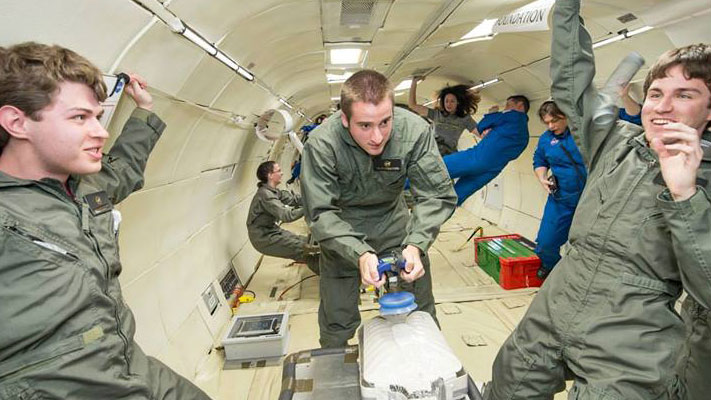
Julie Glenn, a senior in biological sciences and secretary of the Solar House Team, watches the sunset from the front window of her solar house. Photo by Sam O’Keefe
On the outside, Missouri S&T’s Solar Village looks like a simple neighborhood of houses with solar panels on their roofs. However, these photovoltaic arrays are part of a complex system of energy sharing based on distributed power generation. Housing all the essential machinery is the village’s microgrid, a localized source of electricity generation.
The microgrid manages and stores renewable energy for the four student-built solar houses. The unit holds all the necessary components, including two lithium battery racks for energy storage, a power converter, and software and hardware for its intelligence system.
More than a power source, the microgrid is also a research instrument. Missouri S&T faculty and students, along with representatives from utility companies, the Army Corps of Engineers and several Missouri businesses will use it to analyze the abilities of small-scale microgrids and their potential for more widespread use in the future.
Students living in the solar houses can monitor the results of the power transfers and are a practical real-world demonstration of how people will interact with the new energy management system.
The microgrid project was coordinated through Missouri S&T’s office of sustainable energy and environmental engagement (OSE3). OSE3 develops, leads and promotes campus sustainability initiatives and is responsible for management of the Solar Village, the E3 Commons and more.










Recent Comments